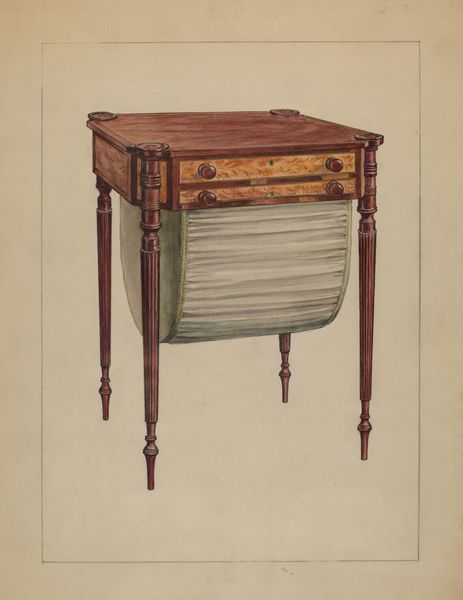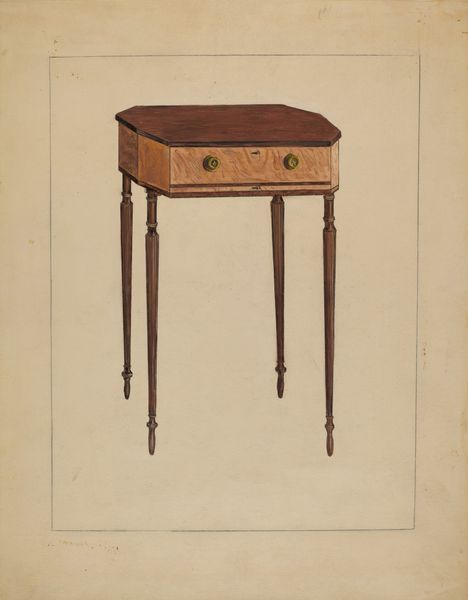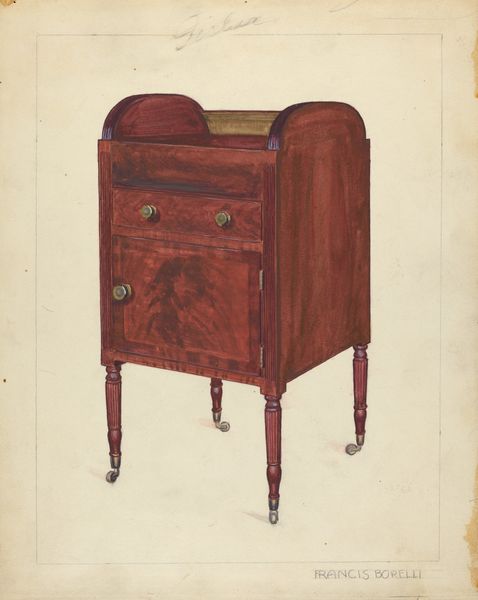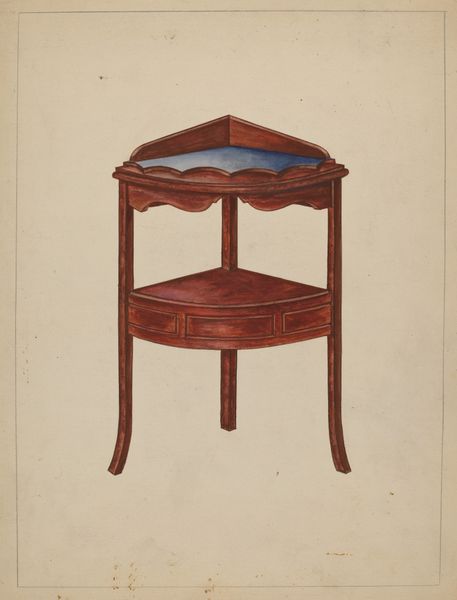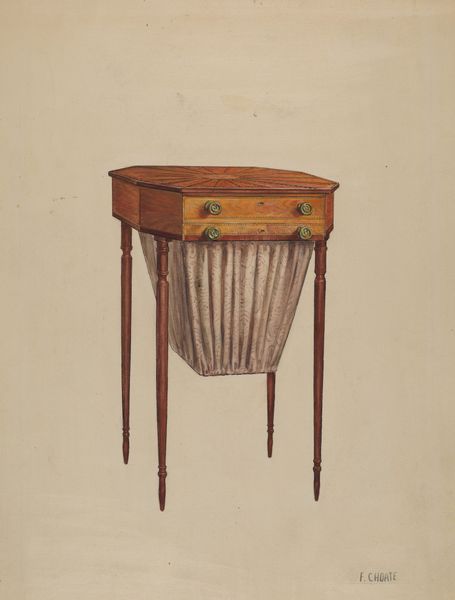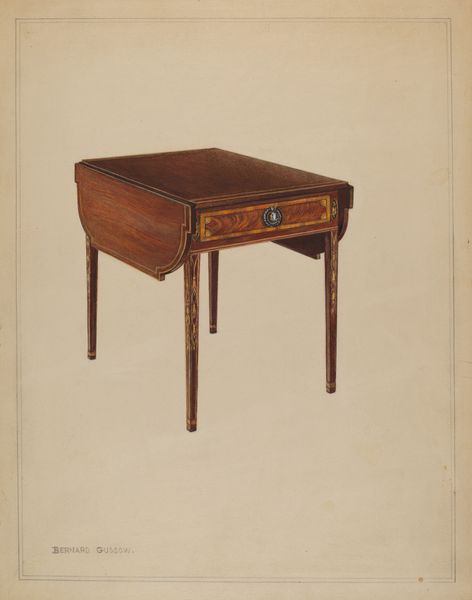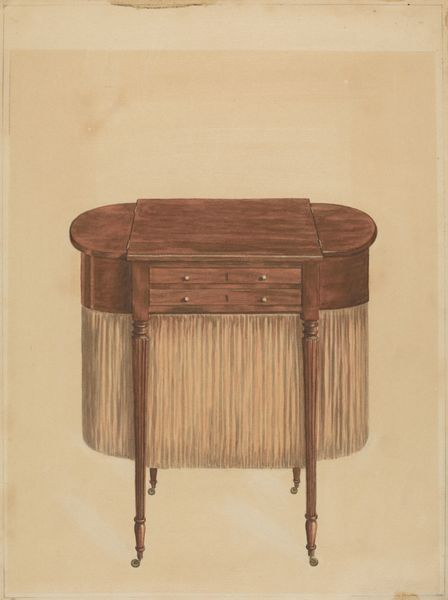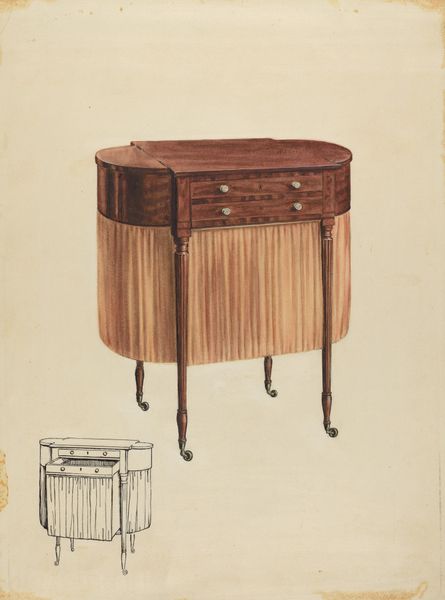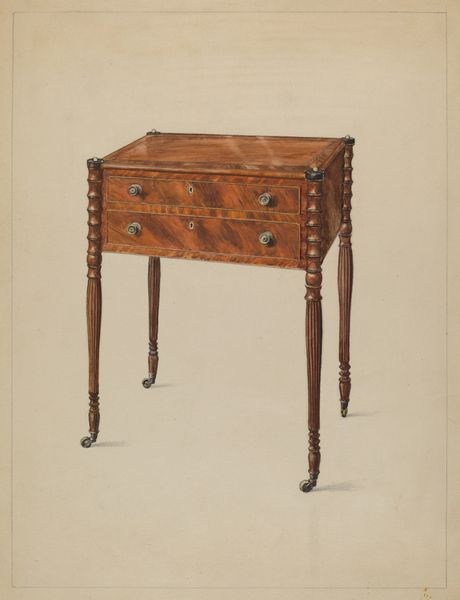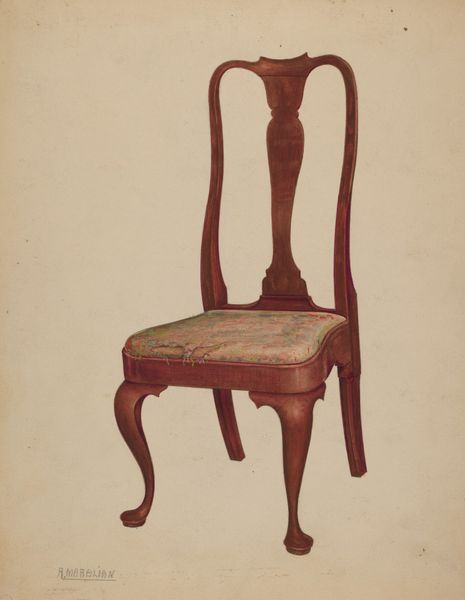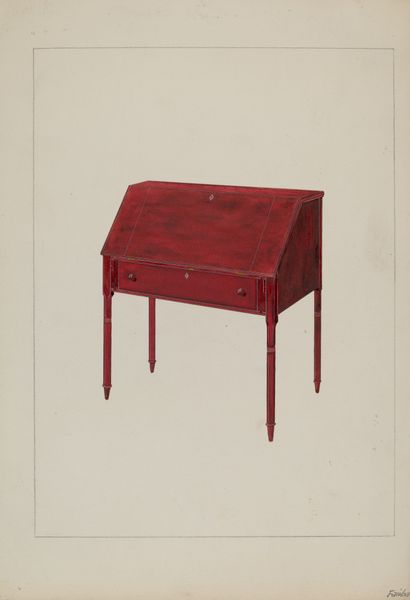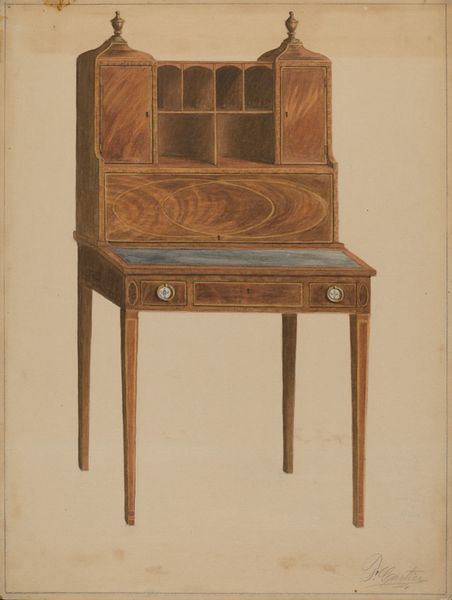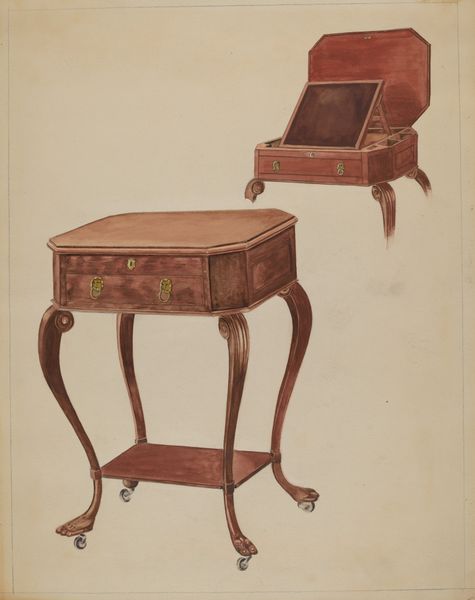
drawing, watercolor
#
drawing
#
water colours
#
watercolor
#
academic-art
#
watercolor
Dimensions: overall: 30.5 x 22.9 cm (12 x 9 in.) Original IAD Object: 29 1/4"high; 22"wide 16"deep
Copyright: National Gallery of Art: CC0 1.0
Editor: So, this is "Sewing Table," a watercolor drawing made around 1936 by Nicholas Gorid. It strikes me as rather formal, almost like a portrait of an object. What symbols do you find particularly evocative in this seemingly simple piece? Curator: It's fascinating how a commonplace object can become a vessel of cultural memory. I see in this sewing table not just a piece of furniture, but a silent witness to countless acts of creation, mending, and perhaps, even secrets whispered over needle and thread. The cloth, draped like a skirt, feels almost ceremonial. Doesn't it remind you of similar draping found in depictions of domestic life from earlier eras? Editor: Yes, there’s something very staged and deliberate about its presentation. The carefully rendered wood grain, the precisely placed hardware, it all speaks to an attention to detail. Curator: Exactly. Consider the "hardware", which has a lot of potential as symbolism. We should investigate the implications of 'drawers,' where private things were kept from general view. Sewing was often a communal activity, done by a solitary woman in her private room, with each drawer, and maybe the pattern on that skirt, hinting to something different. The drawing memorializes the artist’s memory of a time. Does it seem a real image or just a recollection? Editor: I see what you mean. It’s hard to tell. So the details create the feelings! Curator: They absolutely do! The medium - watercolour - reinforces this quietness. Watercolors lend the drawing to an atmosphere of delicate melancholy, capturing light and shadows with precision but still offering the "blurred edges" of memories. It invites you to step closer, into that intimate, feminine sphere, a glimpse into another time. It almost evokes, for me, an awareness of home economics. Editor: That’s interesting. Looking at the object as a portrait. I hadn’t considered how rich a common object can be in symbolism. Thank you. Curator: Indeed, seeing everyday objects through the lens of cultural memory unlocks so much understanding. Every image holds a world, waiting to be deciphered.
Comments
No comments
Be the first to comment and join the conversation on the ultimate creative platform.
